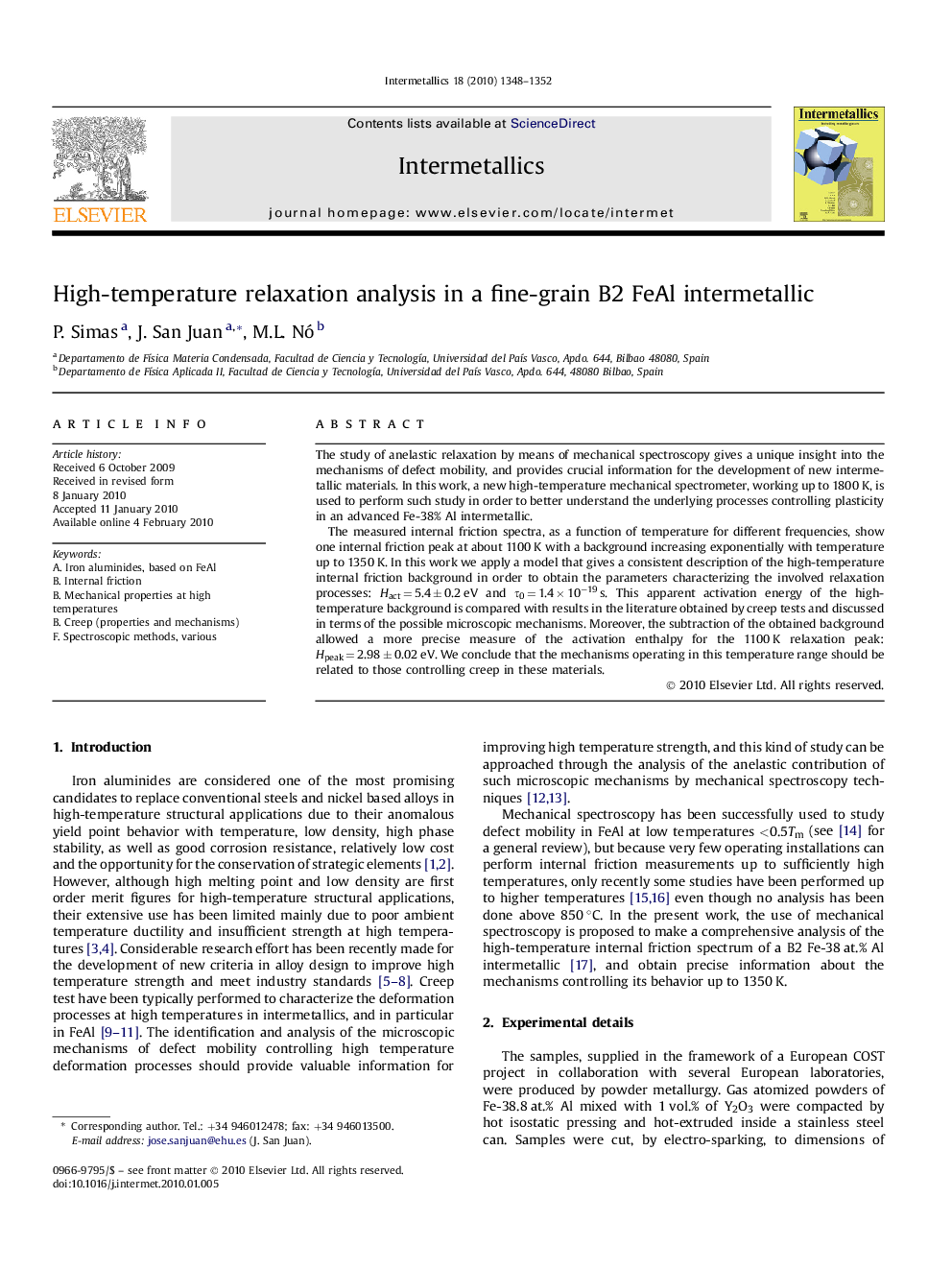| Article ID | Journal | Published Year | Pages | File Type |
|---|---|---|---|---|
| 1601358 | Intermetallics | 2010 | 5 Pages |
The study of anelastic relaxation by means of mechanical spectroscopy gives a unique insight into the mechanisms of defect mobility, and provides crucial information for the development of new intermetallic materials. In this work, a new high-temperature mechanical spectrometer, working up to 1800 K, is used to perform such study in order to better understand the underlying processes controlling plasticity in an advanced Fe-38% Al intermetallic.The measured internal friction spectra, as a function of temperature for different frequencies, show one internal friction peak at about 1100 K with a background increasing exponentially with temperature up to 1350 K. In this work we apply a model that gives a consistent description of the high-temperature internal friction background in order to obtain the parameters characterizing the involved relaxation processes: Hact = 5.4 ± 0.2 eV and τ0 = 1.4 × 10−19 s. This apparent activation energy of the high-temperature background is compared with results in the literature obtained by creep tests and discussed in terms of the possible microscopic mechanisms. Moreover, the subtraction of the obtained background allowed a more precise measure of the activation enthalpy for the 1100 K relaxation peak: Hpeak = 2.98 ± 0.02 eV. We conclude that the mechanisms operating in this temperature range should be related to those controlling creep in these materials.
